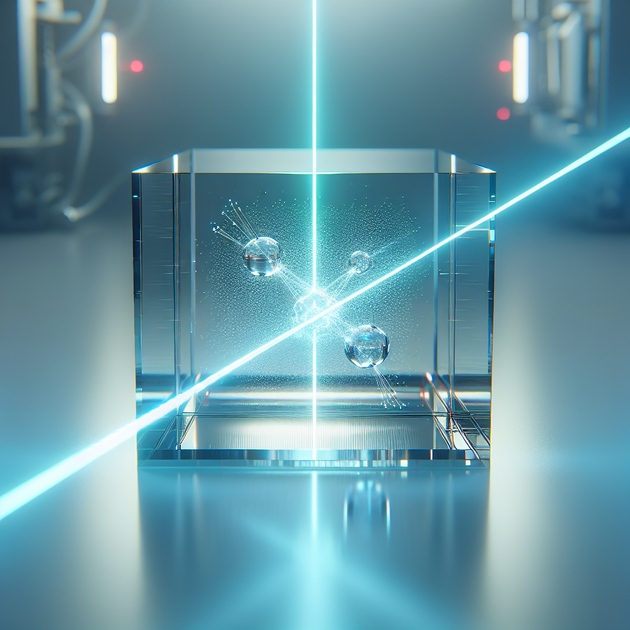Could Crossing Lasers Inside a Box Really Make a 3D Hologram Display?
Have you ever wondered if you could make a true 3D hologram display—not just something that looks like it’s floating in air but the real deal—by crossing lasers inside a box filled with special gas? That’s exactly the idea Reddit user /u/Lonewolf_16916 shared recently, and honestly, it’s one of those “why doesn’t this exist yet?” kind of questions. Let’s break down how this might work—and whether science says it actually could.
How Would This Laser-and-Gas 3D Display Work?
Here’s the basic concept. Imagine a sealed chamber filled with gas that only glows when hit with enough energy. Instead of blasting it with one super-strong laser (which would be dangerous and impractical), you use two weaker lasers. One scans left-right (X axis), the other scans up-down (Y axis). Only where their beams cross does enough energy combine to make the gas glow—a tiny dot of light floating at that exact spot in space.
By rapidly moving these intersection points around inside the box (think super-fast scanning), you could “draw” thousands of glowing dots—voxels—in midair. Together, these dots could form anything from simple shapes to complex floating images. It wouldn’t be a classic hologram (with interference patterns and diffraction), but more like an actual volumetric display—points of light you can see from any angle.
Why This Idea Feels Possible
– The principle is similar to how some fluorescent materials only glow when hit with certain wavelengths or energies.
– Scanning intersecting beams is already used in some optical systems for precise targeting.
– Volumetric displays exist today but usually rely on spinning mirrors or moving parts—which have limits.
– Coating the inside walls so stray laser light gets absorbed helps keep things safe and clean-looking.
But…What Would Actually Happen?
Here’s where things get tricky. I’ll walk through some real-world hurdles this idea might face:
**1. Gas Choice:**
You’d need something that doesn’t glow under everyday conditions but lights up instantly when zapped at just the right spot. Noble gases like xenon or argon are used in lamps and plasma balls—but getting them to emit visible light only at precise intersections is tough.
**2. Laser Energy:**
Lasers don’t really “add up” their energy at crossings in empty space unless there’s something nonlinear going on. In most gases at room temperature, two beams simply pass through each other without interacting much.
**3. Safety & Heating:**
Even if you did manage to trigger localized glowing dots, doing this thousands of times per second might heat the gas fast—or risk eye safety if any beam leaks out.
**4. Scattering & Resolution:**
Gases can scatter light unpredictably (think foggy headlights), making crisp points hard to achieve—especially as you add more dots.
Anecdote: I remember seeing my first “holographic” fan display at a mall—just spinning LEDs fooling your eyes into seeing floating words. It felt magical for five seconds…until I walked behind it and realized it was basically a fancy fan. That disappointment’s why ideas like intersecting-laser displays are so exciting—they hint at something truly three-dimensional.
What Technology Exists That’s Similar?
While no one has made exactly this kind of 3D hologram display yet, there are related attempts:
– **Volumetric Displays:** Some labs use focused lasers to ionize air or generate plasma points that glow midair—but these setups are loud, hot, and not yet practical for home use.
– **Upconversion Materials:** Certain crystals can emit light when hit by two infrared photons at once (“two-photon excitation”), but they’re expensive and usually tiny.
– **Fog Screens:** Some displays project images onto mist or vapor clouds—but they’re still pretty flat compared to true voxels-in-space.
Quick Recap – Challenges for Laser-and-Gas Displays
– Picking a safe gas that glows only at precise intersections
– Making sure laser beams interact only where desired
– Avoiding heat buildup or stray light
– Achieving sharp resolution without scattering
Could Infrared Lasers Make This Work?
Using invisible infrared lasers might be safer for our eyes (with proper precautions), especially if paired with materials that convert IR pulses into visible flashes (“upconversion”). But again, making every voxel glow only where intended remains an engineering mountain to climb.
So…Is It Possible or Just Sci-Fi?
Right now, building an easy-to-use tabletop version isn’t possible with off-the-shelf parts—not because your idea is wild, but because physics makes energy transfer between crossing beams surprisingly inefficient in most gases. Still, research into new fluorescent materials or clever ways to focus energy continues all the time.
Who knows? Maybe your question will inspire someone who finds the missing piece.
If you could create any image as floating points of light in your living room—what would you build first?

Leave a Reply